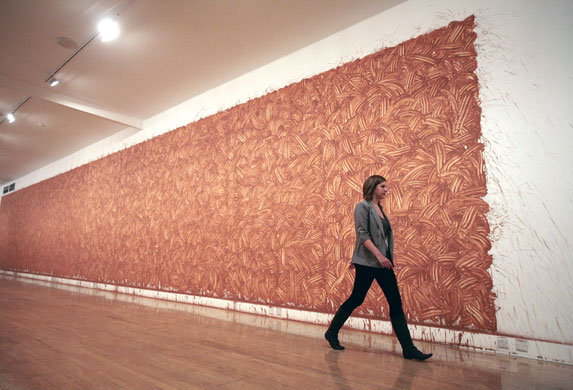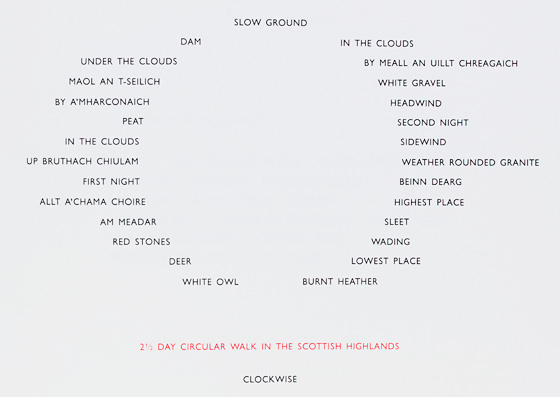
This sculpture as well as most of Andre’s other sculptures show a pattern. The sculpture below is far from unusual in relation to Andre's other works. This grid pattern is repeated multiple times throughout his works.

An ongoing collection of research, images, projects and resources for 3-D Design (ART 117 Std II), Winter 2010, Portland State University









Jeanne Dunning is a Chicago artist who mostly focuses on photography. So much in fact that I could only find one body extension project under her name. In the picture a body suit is put on a woman and it is filled with liquid, and is probably very heavy. When the model lays down it squishes out, and has been compared to a tumor.. This piece is referred to as the “blob”. Overall she is said to try to make things look like other things than what they actually are, typically using the human body.


















 Double Negative is a set of two unfinished matched trenches in Mormon Mesa that Heizer literally blasted out of the earth in 1969-70. The two trenches together measure 1,500 feet long, 50 feet deep, and 30 feet wide and their creation displaced 240,000 tons of rock, mostly rhyolite and sandstone.
Double Negative is a set of two unfinished matched trenches in Mormon Mesa that Heizer literally blasted out of the earth in 1969-70. The two trenches together measure 1,500 feet long, 50 feet deep, and 30 feet wide and their creation displaced 240,000 tons of rock, mostly rhyolite and sandstone. tools or engraving a pattern of randomly dropped matches into a gallery sidewalk (which he later replicated in the desert at a grand scale). For the the last 36 years he has been working on a monumental project called The City. In rural Nevada this project extends over a mile long and a thousand
tools or engraving a pattern of randomly dropped matches into a gallery sidewalk (which he later replicated in the desert at a grand scale). For the the last 36 years he has been working on a monumental project called The City. In rural Nevada this project extends over a mile long and a thousand  feet wide and is estimated to have cost more than 25million dollars by the time it is finished which Heizer estimates will be sometime this year.
feet wide and is estimated to have cost more than 25million dollars by the time it is finished which Heizer estimates will be sometime this year.


 Nils Udo is a landscape artist that originally began as a painter but began to work exclusively with nature in 1972 after he moved from Paris to rural Bavaria and experienced the ongoing destruction of nature. Udo primarily designs site-specific works that only use natural materials from the area.
Nils Udo is a landscape artist that originally began as a painter but began to work exclusively with nature in 1972 after he moved from Paris to rural Bavaria and experienced the ongoing destruction of nature. Udo primarily designs site-specific works that only use natural materials from the area.


Lives in New York and is a sculpture artist who weaves tapestries and other found objects. Public art and sculpture is her main focus however she studied painting in college. Some site specific pieces are located in New York, Omaha Nebraska, and Toledo Ohio. Universities an airports have requested her work during the 70’s and 80’s. She also got involved in many collaborative pieces later in life.
Abstract and pre-abstract expressionist painters heavily Influenced her early work. She explored many minimalist ideas through her work. She used rope, steel cables, chain link fencing, 2x4’s and wood lathes. Architecture heavily influenced her public projects which have won her many awards. Many names have been applied to her projects like Land Art, Earth Works, and Site Sculpture.